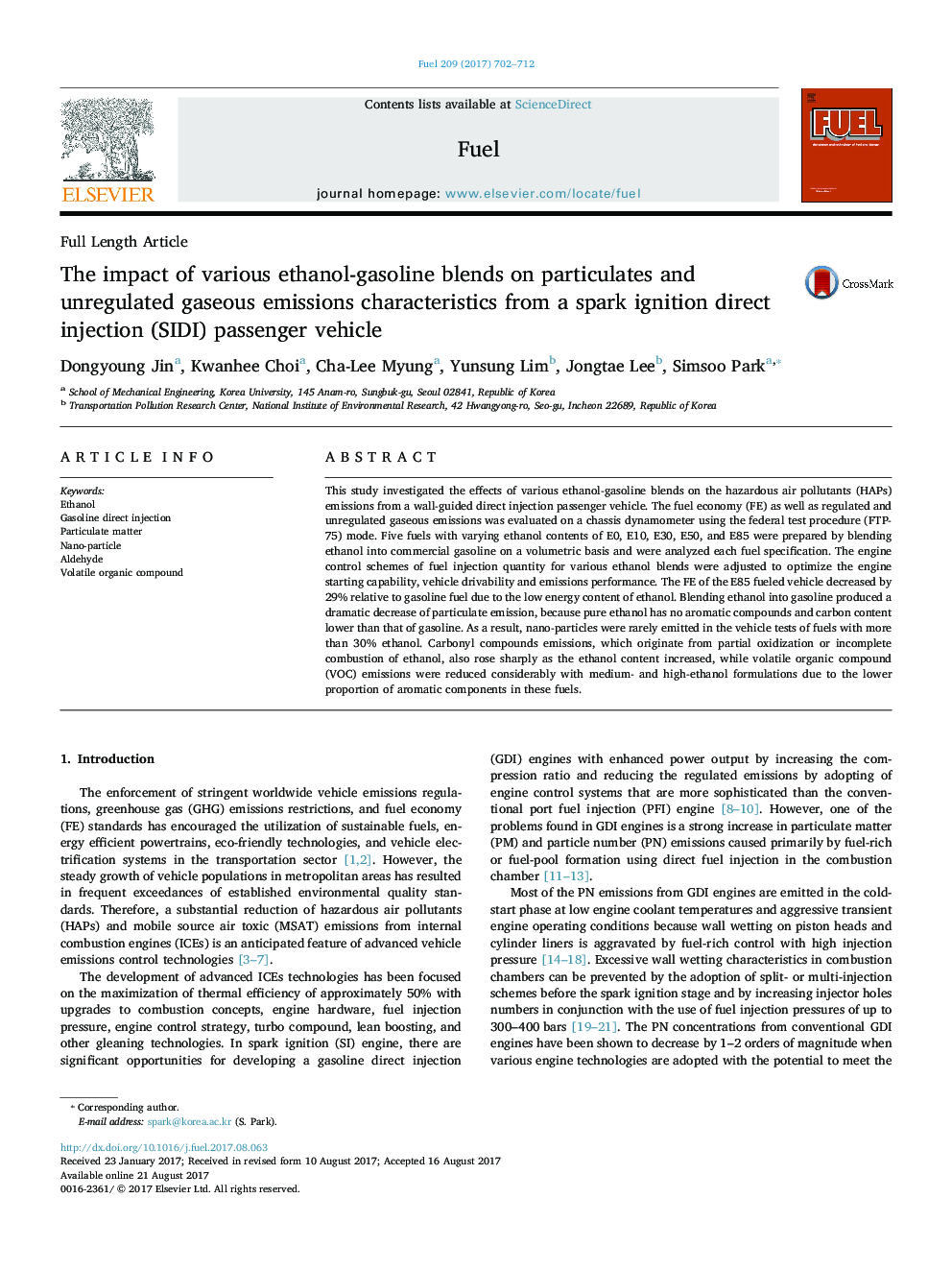| کد مقاله | کد نشریه | سال انتشار | مقاله انگلیسی | نسخه تمام متن |
|---|---|---|---|---|
| 6473999 | 1424955 | 2017 | 11 صفحه PDF | دانلود رایگان |

- Emissions from various ethanol-gasoline blends were investigated in SIDI vehicle.
- Fuel economy and CO2 were related to heating value and ethanol content of the fuels.
- Ethanol blending of 30-85% showed strong PN reduction relative to low-ethanol fuels.
- Individual HCs, alcohols, and aldehydes emissions strongly increased with E85 fuel.
- Aromatic HCs showed much lower emission characteristic as ethanol contents increased.
This study investigated the effects of various ethanol-gasoline blends on the hazardous air pollutants (HAPs) emissions from a wall-guided direct injection passenger vehicle. The fuel economy (FE) as well as regulated and unregulated gaseous emissions was evaluated on a chassis dynamometer using the federal test procedure (FTP-75) mode. Five fuels with varying ethanol contents of E0, E10, E30, E50, and E85 were prepared by blending ethanol into commercial gasoline on a volumetric basis and were analyzed each fuel specification. The engine control schemes of fuel injection quantity for various ethanol blends were adjusted to optimize the engine starting capability, vehicle drivability and emissions performance. The FE of the E85 fueled vehicle decreased by 29% relative to gasoline fuel due to the low energy content of ethanol. Blending ethanol into gasoline produced a dramatic decrease of particulate emission, because pure ethanol has no aromatic compounds and carbon content lower than that of gasoline. As a result, nano-particles were rarely emitted in the vehicle tests of fuels with more than 30% ethanol. Carbonyl compounds emissions, which originate from partial oxidization or incomplete combustion of ethanol, also rose sharply as the ethanol content increased, while volatile organic compound (VOC) emissions were reduced considerably with medium- and high-ethanol formulations due to the lower proportion of aromatic components in these fuels.
Journal: Fuel - Volume 209, 1 December 2017, Pages 702-712